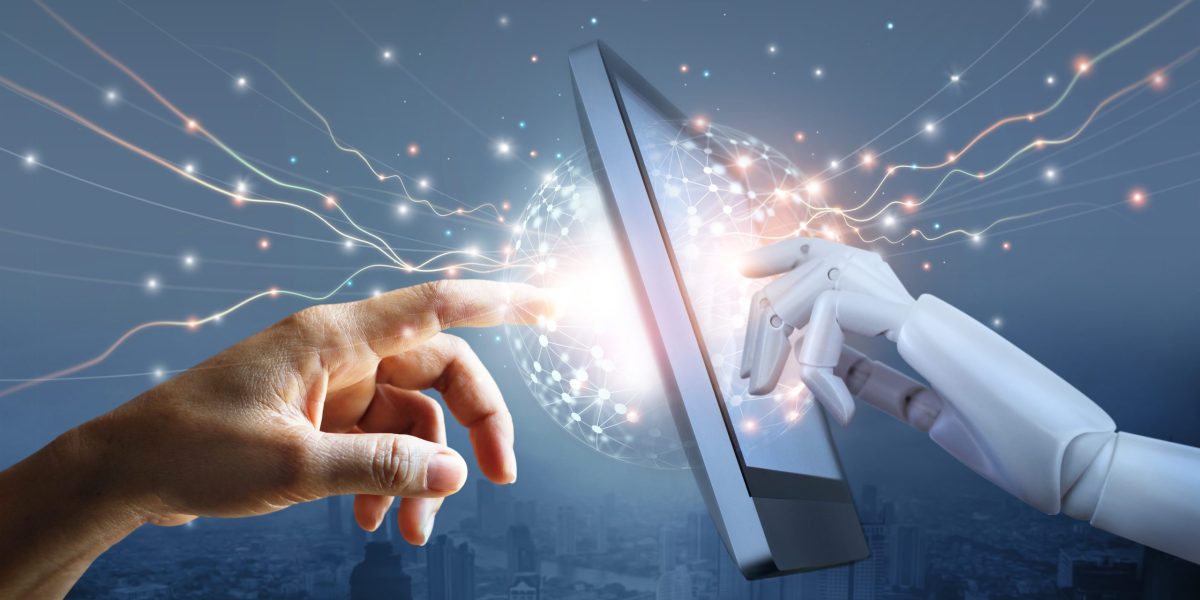|
Getting your Trinity Audio player ready...
|
The following is an interview with Andy & Chris by Montaka Investment Specialist, Matt Briggs.
MB: What made you pick AI as a topic to go deep on? And how long have you been working on this whitepaper?
AM: AI is a topic I’ve been fascinated with for two decades. My first undergraduate degree was in electrical engineering and telecommunications. I happened to do my honours thesis on a machine learning (ML) model that could listen to spoken audio and identify its language – whether it was English, French, German or Spanish, for example.
That was nearly 20 years ago and the constraints on data and computing at the time meant that progress was slow going. Many people imagined different ways that ML could be used but they were not practically feasible.
Over more recent years, as we’ve studied many of the world’s leading technology businesses, we’ve seen these constraints overcome and we’re really starting to see the beginnings of just how powerful AI can be – whether it’s in search, personalization and recommendation algorithms, image recognition, autonomous driving, etc.
And it really struck us that there are strong self-reinforcing characteristics associated with AI. That is, as AI models improve, they become better at improving themselves – and become even more powerful still. Logically, therefore, the power of AI is going to grow exponentially over the coming years.
We’ve been monitoring AI for a number of years now but really started analysing the investment implications of this topic in detail over the last 12-18 months because we think we are getting close to an inflection point. We are now seeing tangible applications for AI in major global business functions and, yet, we think we are, just now, only at the tip of the AI iceberg.
MB: How did you structure your team to investigate AI?
CD: Montaka’s investment team structure is somewhat unusual in that we are all generalists and intentionally overlap with each other’s companies and industries of focus. We think this gives us the best chance of drawing upon multiple different perspectives so our team can best assess the shape of the probability of the range of possible outcomes for any given company or industry.
Our natural team structure is also an advantage when it comes to going deep on a topic like AI, as we’ve done. It enabled us to approach the subject from several different angles right across the value chain: from chip designers and fabricators; to the hyperscalers in the business of building large-scale AI models as platforms and the associated compute and storage offerings to support these platforms; to the application businesses who tailor these AI models to solve corporate and consumer customer problems; and to the customers themselves.
This was a piece of work that substantially drew on the work of every Montaka investment professional in multiple ways.
MB: Where do you think the investment community currently is on the topic of AI?
AM: I think there is a wider range of understanding of AI than for most investment topics being debated today. And this is not surprising given both (i) the relative ‘newness’ of the topic as a major investment theme, and (ii) the technical nature of the topic.
The investment implications – particularly for the hyperscalers, as we detail in our report – are far from being fully appreciated by the market today, in our view. To many investors, AI may be perceived as just another iteration of automation – or something like that. In fact, powerful AI should be viewed as something more akin to a ‘master key’ that has the power to solve the hardest engineering problems across nearly all fields and industries.
Our report seeks to contribute to the education of Montaka’s investors and the broader public on AI and its implications. This subject is also of critical importance for governments and policymakers to understand as well.
MB: There will clearly be lots of winners from AI. What made you focus on the hyperscalers as a major source of investment opportunity?
CD: Well, as I said previously, we looked at the entire AI ‘value chain’ to build our understanding of the topic. And there will no doubt be investment opportunities right across this spectrum.
But the hyperscalers really jumped out at us, given their extremely advantaged competitive position within this large-scale transformation.
So, as we argue in our whitepaper, we think the hyperscalers are poised to benefit from this structural change in a way that is highly reliable, very meaningful to their business, and underappreciated today.
Said another way, we think the hyperscalers represent the safest and surest way for investors to win in AI.
MB: Why do you publish whitepapers? Why not keep your intellectual property private?
AM: There are a couple of reasons why we publish whitepapers in addition to writing in-depth articles each month in our Montaka Monocle. First, we believe in being transparent with Montaka’s investors. We view Montaka’s investors as partners in our ongoing intellectual quest to better understand what is going on in the world, within industries and inside companies. We’re not only looking for new investment opportunities, but we’re also continually pressure-testing Montaka’s existing investee companies.
And we won’t always get things right – but at least if we’re clear about why we’re doing what we’re doing, investors can assess if they want to include Montaka in their own personal investment team.
Second, we find that writing helps us clarify our thinking. If we can’t succinctly articulate our thesis on any given topic, then it is more likely than not that we have unclear thinking – and more work needs to be done.
MB: Final question: what is a fun fact that you discovered about AI during your research?
CD: I think it’s pretty staggering that we are currently in a five-year period during which approximately 500 million new software applications are being developed. And to put this into context, this is equivalent to the total number of apps developed over the last 40 years.
This is one of the reasons why we believe we really are at an inflection point today. App development is literally exploding – in no small part because the hyperscalers and others are creating the tools for just about everyone to develop apps. And most of these new apps will, in some way, rely on AI models – many of which will be owned by, and rely on massive amounts of compute from, the hyperscalers.
MB: Great. Thanks guys.
Related: Read the summarized findings of our whitepaper and get access to the detailed version here ‘Why epoch-defining AI is today’s most important investment theme (and the safest way to profit)‘




